Exploring Tarot Card Images and Their Meanings
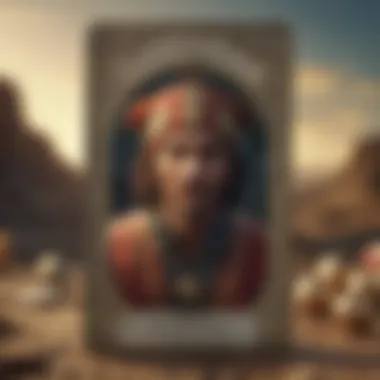
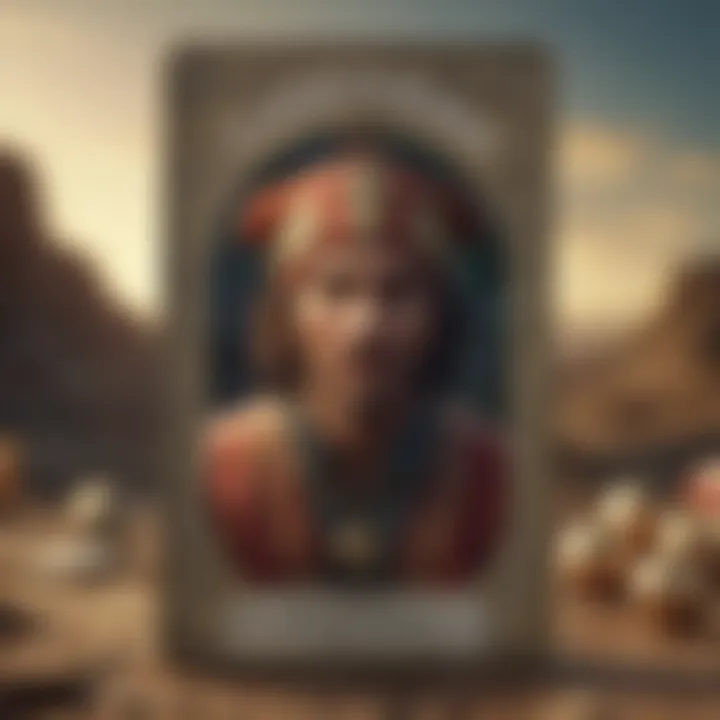
Intro
Tarot cards serve as more than just a mystical tool for divination; they represent a complex system of imagery and symbolism that can guide individuals towards self-discovery and personal insights. Each card in a tarot deck is rich in meaning and connection, emphasizing unique messages that resonate with different aspects of life. This narrative intends to elucidate the intricate relationship between the images on tarot cards and their interpretations, enhancing the understanding of both novice and seasoned tarot enthusiasts.
The journey through tarot involves not only understanding the visuals presented but also embracing their deeper implications for personal and spiritual growth. As we explore various cards, we will scrutinize both the pictures and meanings, revealing how these elements work in harmony to offer valuable insights.
Zodiac Profiles
Overview of Each Sign
The tarot deck often intertwines with astrological signs, where each sign possesses distinct characteristics. Understanding these connections can enhance the reading experience. The twelve zodiac signs—Aries, Taurus, Gemini, Cancer, Leo, Virgo, Libra, Scorpio, Sagittarius, Capricorn, Aquarius, and Pisces—serve as a foundation for interpretations of tarot cards.
Personality Traits
Each sign encapsulates specific personality traits. For instance:
- Aries: Impulsive, courageous, and energetic.
- Taurus: Dependable, patient, and practical.
- Gemini: Adaptable, communicative, and curious.
- Cancer: Nurturing, sensitive, and intuitive.
- Leo: Charismatic, confident, and ambitious.
- Virgo: Analytical, meticulous, and helpful.
- Libra: Diplomatic, fair, and sociable.
- Scorpio: Passionate, determined, and mysterious.
- Sagittarius: Adventurous, optimistic, and open-minded.
- Capricorn: Disciplined, responsible, and pragmatic.
- Aquarius: Innovative, independent, and humanitarian.
- Pisces: Compassionate, artistic, and dreamy.
Strengths and Weaknesses
Every sign also has its strengths and weaknesses. For example:
- Leo's leadership qualities may shine in team settings, yet they may also become overly demanding.
- Pisces can connect deeply with others but might struggle with boundaries.
Recognizing these traits in relation to tarot imagery can provide deeper insights into the readings and assist the querent in understanding their situation more holistically.
Compatibility Insights
Love and Relationships
Tarot readings often explore the dynamics in romantic partnerships. The imagery on certain cards can reflect the essence of compatibility between signs. For example, the Lovers card can symbolize shared values and passion in relationships, while the Two of Cups indicates emotional connection and harmony.
Friendship Compatibility
Friendships align with various tarot cards as well. The Page of Cups can signify playful and creative friendships, while the Ten of Pentacles highlights loyalty and long-term support. Understanding these connections can guide individuals in nurturing their social bonds.
Workplace Dynamics
Work environments benefit from an understanding of compatibilities as well. The Emperor card might represent authority figures, while the Three of Pentacles can symbolize teamwork and collaboration. Recognizing these dynamics may help in navigating professional relationships.
Astrological Events
Monthly/Weekly Horoscope Breakdown
Astrological events can heavily influence tarot interpretations. Monthly horoscopes help anticipate shifts in energy, which can enrich the tarot reading process. It is useful to align readings with celestial cycles.
Notable Celestial Events
Noteworthy astrological occurrences such as eclipses or retrogrades can impact interpretations. Tarot can effectively serve as a tool to navigate through these transitions.
How to Prepare for Astrological Shifts
Preparing for these shifts may involve setting intentions or reflecting on past experiences. Incorporating tarot readings into these times can assist in deepening understanding of personal growth and opportunities.
Tarot cards function as a bridge between the conscious and subconscious, revealing the unseen forces at play in our lives.
In essence, tapping into the images and meanings of tarot cards, especially through the lens of zodiac influences, provides a compelling framework for personal exploration and development. With this knowledge, both readers and querents can approach tarot with a new perspective, fostering a deeper connection with both themselves and the universe.
Foreword to Tarot Cards
Tarot cards have fascinated individuals for centuries. Understanding tarot is essential for anyone delving into its intricate meanings and imagery. This article explores the elements that make tarot cards a valuable tool for self-reflection and spiritual guidance. Knowing the basics can greatly enhance your experience, whether you are a novice or an experienced reader.
Historical Background
The history of tarot cards is rich and complex. The origins can be traced back to the 15th century in Europe, where they were primarily used for playing games. It wasn't until the 18th century that the tarot began to be associated with mysticism and divination. Notable figures like Antoine Court de Gébelin and later, Eliphas Lévi, contributed to the transformation of tarot from a simple card game into a spiritual emblem.
The illustrations and symbols found in tarot decks draw from various cultural and metaphysical references. These connections offer deeper layers of meaning that resonate throughout the practice of tarot reading today. Historical context enriches our understanding of how tarot cards have evolved into the spiritual tools they are commonly seen as today.
Understanding Tarot Decks
Different tarot decks exist, each with unique artwork and symbolism. The most common deck is the Rider-Waite-Smith Tarot, designed in the early 20th century. Its vivid imagery has become a foundation for many modern decks.
When choosing a deck, consider your personal taste and intuition. A deck that resonates with you will enhance your reading experience significantly. Familiarizing oneself with the structure is also beneficial. Generally, a standard tarot deck consists of 78 cards, divided into two main categories: the Major Arcana and the Minor Arcana.
The Major Arcana contains 22 cards that represent significant life themes and archetypes, whereas the Minor Arcana includes 56 cards, divided into four suits—Cups, Swords, Wands, and Pentacles. Each suit reflects different aspects of the human experience, from emotions to intellect, creativity, and material concerns.
Tarot decks do not only vary in their artwork but also in terms of their intended use. Some decks focus on specific themes, such as astrology or mythology. This diversity allows individuals to select a deck that aligns with their personal journeys, making the practice of tarot uniquely personal.
The Structure of Tarot Cards
The structure of tarot cards is a fundamental aspect of understanding their application and significance. Tarot decks are generally divided into two main parts: the Major Arcana and the Minor Arcana. Each of these sections serves a distinct purpose in readings and carries unique meanings
Understanding this structure aids both novices and seasoned readers in interpreting messages that cards convey. Knowledge of how the cards are organized can enhance readings by allowing for a more profound comprehension of the symbolism and nuances inherent in each card's imagery.
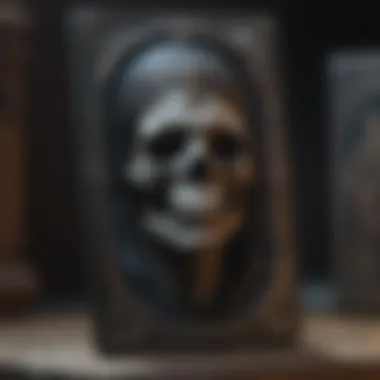
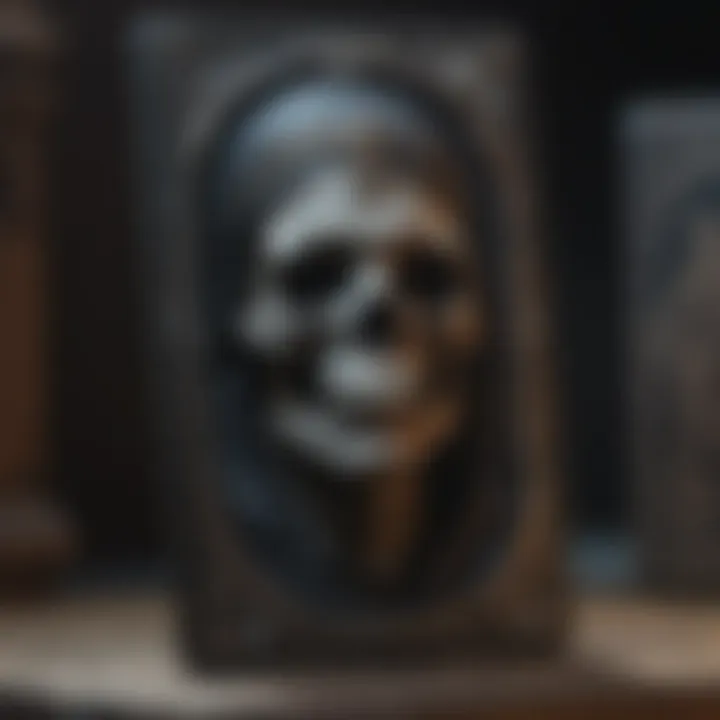
Major Arcana
The Major Arcana consists of twenty-two cards, which are often considered the backbone of any tarot deck. These cards represent significant life themes and energies. For many, the Major Arcana is seen as more impactful compared to the Minor Arcana due to its focus on universal experiences and archetypes. Each card in this section tells a story, revealing vital lessons and insights that push individuals forward on their journey.
The significance of the Major Arcana lies in its ability to capture pivotal moments in life. These cards often symbolize growth, transformation, and the larger forces at play. When they appear in readings, they are viewed as signals of major events or changes.
Minor Arcana
The Minor Arcana is divided into four suits: Cups, Swords, Wands, and Pentacles. Each suit focuses on different aspects of human experience.
Cups: Emotion and Relationships
Cups are associated with emotions, intuition, and relationships. This suit emphasizes the interpersonal dynamics and feelings that color our lives. The key characteristic of Cups is their focus on emotional depth and connection. They often represent ideas of love, harmony, and partnerships. Given their significance, Cups are a beneficial choice in readings that explore relational or emotional themes.
Cups hold unique features such as the ability to highlight both the positive and negative aspects of emotions. In readings, they can reveal the joys of love but also reflect the challenges of emotional turmoil. This duality makes them pertinent in gaining insights into personal growth and emotional well-being.
Swords: Intellect and Conflict
The Swords represent thought, intellect, and conflict. This suit often speaks to challenges and obstacles in the mental realm. The key characteristic of Swords is their focus on clarity, decision-making, and the sometimes harsh reality of situations. They are read as beneficial for exploring mental challenges, strategies, and resolutions.
Moreover, Swords possess a unique feature of representing truths that might be difficult to confront. They can indicate power struggles or conflict, but also the need for honesty and reflection. Their presence in a reading can serve as a reminder to navigate obstacles with clarity and understanding.
Wands: Creativity and Action
Wands are connected to creativity, passion, and action. This suit embodies ideas of drive and ambition. The key trait of Wands is their emphasis on inspiration and the pursuit of one's goals. Wands are often considered beneficial for those seeking to activate their creative energies or take initiative in various aspects of life.
Wands also have a unique quality that highlights the need for decision-making. They encourage action, but also require careful consideration of the choices at hand. Their influence in a reading can inspire one to harness personal power and aim for their aspirations.
Pentacles: Material and Financial Aspects
Pentacles relate to material success, resources, and finances. This suit focuses largely on the physical and tangible aspects of life. The key characteristic of Pentacles is their connection to stability and practicality. They are a popular choice in readings examining financial matters and career progression.
The unique feature of Pentacles lies in their capacity to represent harvest and results of efforts. They remind individuals of the importance of discipline and hard work in achieving their goals. Their appearance in readings encourages a practical approach to problems related to material and financial issues.
In summary, understanding the structure of tarot cards enhances one's ability to interpret readings meaningfully. Each aspect serves its role in depicting the complex tapestry of human experience.
Card Imagery and Symbolism
Card imagery and symbolism play a crucial role in the study and use of tarot cards. The images depicted on each card are not merely artistic choices; they are laden with layers of meaning that can enhance a reader's interpretation during a reading. Each card tells a story visually, guiding the reader towards an understanding of complex emotional, psychological, and spiritual themes. Understanding these symbols can provide deeper insights into personal situations, making tarot a powerful tool for both divination and reflection.
Visual Elements of Tarot Cards
The visual elements of tarot cards consist of multiple components, which include symbols, characters, backgrounds, and additional details that build a narrative. Each tarot deck has a unique art style that reflects its theme or intention. For instance, the Rider-Waite tarot deck is well-known for its vivid imagery and illustrative style.
- Symbols: Symbols are fundamental in conveying meaning. For example, a tower might symbolize chaos or sudden change.
- Characters: The characters depicted on the cards often represent archetypal figures that can resonate with the reader's own experiences.
- Composition: The way elements are arranged within the card can affect interpretation. An isolated figure against a stormy background may evoke feelings of loneliness.
The careful consideration of these elements offers a rich tapestry of insights during a tarot reading. A reader should not only look at the individual symbols but also how they interact with one another within the card.
Color Significance
Color plays a vital role in conveying emotional nuances in tarot imagery. Each color has its own significance and can convey a wide range of feelings and energies.
- Red often represents passion, anger, or action.
- Blue can signify calmness, spirituality, or melancholy.
- Yellow generally suggests clarity, intellect, and optimism.
When interpreting tarot, an awareness of color usage can provide additional layers of understanding. For instance, if a card prominently features green, it might hint at themes surrounding growth, healing, or financial matters.
“Colors affect our mood and emotions. In tarot, they serve as another language, enhancing our intuitive grasp on the card’s message.”
Imagery Variation Across Decks
The diversity of tarot decks available today means that imagery can vary widely even for the same card. Decks like the Thoth Tarot and the Wild Unknown Tarot introduce unique interpretations of traditional imagery. These differences underline the subjective nature of tarot.
- Traditional vs. Alternative Decks: Traditional decks typically adhere to established symbolism, while alternative decks may reinterpret these symbols based on modern or cultural perspectives.
- Cultural Influence: Decks might reflect cultural motifs or philosophical concepts, altering the meanings profoundly. For instance, a deck rooted in Eastern philosophies might place emphasis on concepts of balance and harmony differently than a Western-centric deck.
Understanding how imagery differs can aid a reader in applying the appropriate meanings during readings. Each deck can resonate differently with each user, potentially altering a reading's insight based on the visual language used.
Meanings of Major Arcana Cards
The Major Arcana consists of twenty-two cards that carry significant meanings in the tarot deck. Unlike the Minor Arcana, which often deal with everyday events, the Major Arcana delves into profound themes and archetypes. Understanding these cards is crucial for interpreting tarot readings. Each Major Arcana card represents unique lessons, challenges, and aspects of the human experience. This section explores the essence of each card, illustrating their role in personal introspection and spiritual growth.
The Fool
The Fool is the first card of the Major Arcana, numbered zero. It signifies new beginnings, spontaneity, and a sense of adventure. The imagery often depicts a young traveler on the edge of a cliff, symbolizing the leap of faith into the unknown. This card encourages you to embrace life with an open heart and mind.
In readings, The Fool can suggest embarking on a new journey. It reminds you to trust your instincts and to not fear the uncertainties ahead. Embrace your inner child; this card invites you to take risks and explore new possibilities without preconceptions.
The Magician
The Magician represents mastery and the power to manifest desires. This card embodies the ability to turn visions into reality. Depictions often include various tools that represent the four elements: a wand for fire, a cup for water, a sword for air, and a pentacle for earth.
In a reading, The Magician signifies that you have the resources and skills to achieve your goals. It motivates you to take action and assert your will. The card can also indicate a time when you need to focus your energy to make the most of available opportunities.
The High Priestess
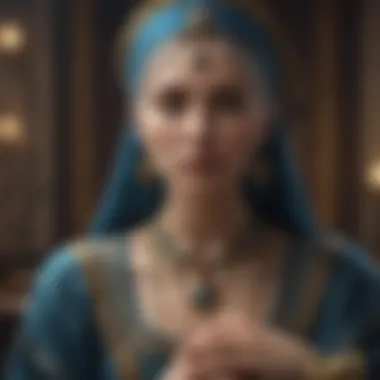
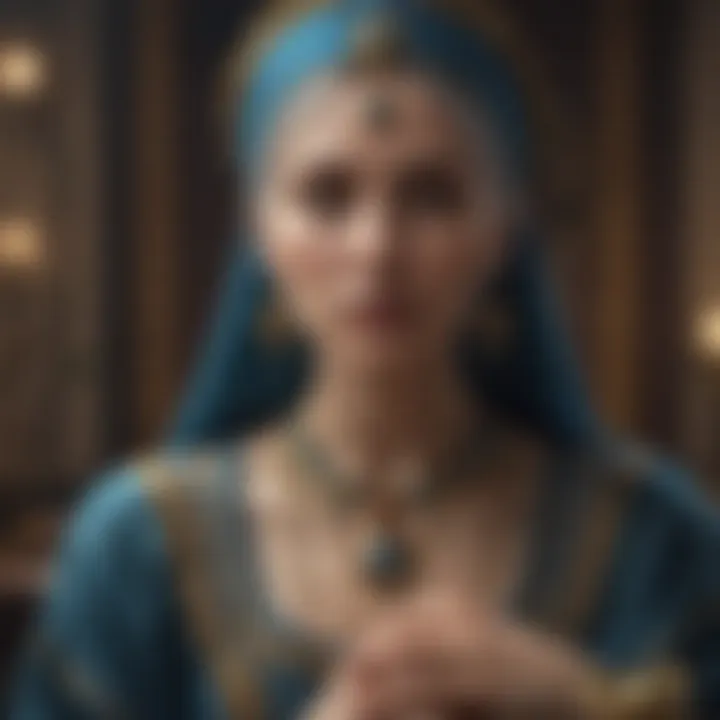
The High Priestess symbolizes intuition, mystery, and inner wisdom. This card illustrates the balance between the conscious and unconscious mind. Typical imagery features a serene woman seated between two pillars, representing duality and hidden knowledge.
When drawn, The High Priestess encourages you to trust your intuition. She often indicates that there are deeper truths that require exploration. This card underscores the importance of listening to your inner voice and tapping into spiritual insights.
The Emperor
The Emperor stands for authority, structure, and control. This card often depicts a powerful figure seated on a throne, symbolizing leadership and stability. It conveys the influence of order and discipline in one's life or situation.
In readings, The Emperor may signal the need for organization and assertiveness. It encourages you to step into a leadership role or to establish boundaries. Consider how authority influences your decisions; this card often emphasizes taking responsibility for your actions and the environment you create.
The World
The World card illustrates completion, wholeness, and achievement. This image typically shows a figure surrounded by a laurel wreath, embodying success and fulfillment. It signifies the end of a cycle and the realization of goals.
When this card appears in a reading, it suggests that you are reaching a significant milestone. Celebrate your achievements and reflect on the journey that has brought you here. The World encourages you to explore new horizons as you prepare for your next chapter.
The Major Arcana cards are powerful symbols in tarot, reflecting universal themes and significant life lessons. Their meanings can guide personal development and spiritual exploration.
Meanings of Minor Arcana Cards
The Minor Arcana holds significant relevance within tarot reading. These cards, unlike their Major Arcana counterparts, reflect everyday experiences and influences. They represent the nuanced interactions and emotions we encounter in our daily lives. Understanding the meanings of Minor Arcana cards enriches the overall reading, providing insights into personal situations, relationships, and emotional landscapes. Additionally, they address aspects of our practical life such as work, finance, and creativity. By interpreting these cards correctly, readers can glean valuable understanding and guidance for their personal growth.
Cups: Emotion and Relationships
Cups are the suit connected to emotions, love, and interpersonal relationships. Often depicted with water imagery, cups symbolize the deeper feelings we experience. They encourage introspection regarding our emotional well-being and connections with others.
When a cups card appears, it signals the presence of emotional issues. For example, the Two of Cups often signifies mutual attraction or partnership, while the Three of Cups might represent celebration and friendship. Each card invites reflection on the state of relationships, guiding the individual toward a better emotional understanding.
"The suit of Cups emphasizes the essence of what it means to connect and engage intimately with others and oneself."
Swords: Intellect and Conflict
Swords represent the realm of thoughts, ideas, and struggles. This suit often delves into mental conflict, communication, and decision-making. The imagery is potent, with swords personifying clarity and challenges alike.
For instance, the Ace of Swords introduces moments of new ideas and breakthroughs. In contrast, the Eight of Swords portrays feelings of restriction or confusion. Engaging with the swords can enlighten an individual's awareness of how their thoughts influence their reality. Thus, this suit encourages critical thinking and the resolution of conflicts, be they internal or external.
Wands: Creativity and Action
Wands embody the spirit of inspiration, creativity, and action. This suit is often depicted with flourishing imagery, emphasizing initiative and ambition. Wands are very much about movement and personal drive.
When a wands card turns up, it typically signifies movement towards goals or new ideas. For example, the Three of Wands indicates expansion and foresight in projects, whereas the Five of Wands may represent competition or conflict in pursuing these goals. This suit empowers individuals to channel their creativity and energy effectively.
Pentacles: Material and Financial Aspects
Pentacles relate to material wealth, stability, and the physical world. Often associated with coins and resources, they provide insight into one’s financial matters and tangible aspects of life. Understanding this suit is crucial for recognizing how personal and financial stability impact overall well-being.
The Ace of Pentacles suggests new opportunities in finance or career, while the Five of Pentacles may convey feelings of insecurity or struggle. Each Pentacle card invites examination of one's relationship with possessions and the material realm, focusing on growth and security.
These four suits of the Minor Arcana illustrate unique aspects of life. Together, they provide a comprehensive view of the human experience, bridging the emotional, intellectual, creative, and material realms. Understanding each suit's significance enables readers to navigate their life journeys more effectively.
Common Tarot Spreads and Their Uses
Understanding common tarot spreads holds significant relevance in the world of tarot reading. Each spread serves a unique purpose and provides a framework for interpreting the messages from the cards. Whether you are a beginner or a seasoned reader, knowing how to utilize these spreads can enhance the clarity and depth of your readings. Common tarot spreads offer a way to organize thoughts and explore various situations, leading to more focused readings.
Benefits of using common tarot spreads include:
- Structure: They provide a clear framework, making it easier to analyze the information conveyed by the cards.
- Depth: Different spreads can uncover layers of insight that might not surface in single-card readings.
- Versatility: Specific spreads are suited for particular inquiries, allowing for tailored interpretations.
In summary, understanding tarot spreads empowers readers to gain better insights from the imagery and meanings of the cards.
The Three-Card Spread
The Three-Card Spread is one of the simplest and most versatile layouts in tarot reading. It typically focuses on past, present, and future, but can be adapted to various queries. Each card represents a different aspect of the question at hand, allowing for a more rounded perspective.
- Past: This card reflects influences or events that shaped the current situation.
- Present: The second card indicates the current state of affairs or the main challenges faced.
- Future: The final card offers potential outcomes or suggestions based on current energies.
It is valuable for quick assessments and can be utilized for specific questions or general guidance.
The Celtic Cross
The Celtic Cross is a more complex and comprehensive spread. It consists of ten cards and provides a deep dive into a situation. This spread explores not only external influences but also internal feelings and hopes.
The positions in this spread include:
- The Present: The current situation.
- The Challenge: Obstacles to overcome.
- The Past: Influences from the past.
- The Future: Upcoming events or circumstances.
- Above: The conscious mind and goals.
- Below: The subconscious influences or fears.
- Advice: Guidance based on the situation.
- External Influences: How others may impact the outcome.
- Hopes and Fears: Inner feelings regarding the outcome.
- Outcome: The potential final result.
This spread is especially helpful for more in-depth readings. It can reveal intricate details about complex situations and provides multiple layers of understanding.
"The Celtic Cross spread is often regarded as the most comprehensive layout for tarot readings, allowing incredible depth and insight."
In summary, mastering the art of spreads can significantly enhance one's tarot practice, offering clarity and direction through the language of cards.
Interpreting Tarot Readings
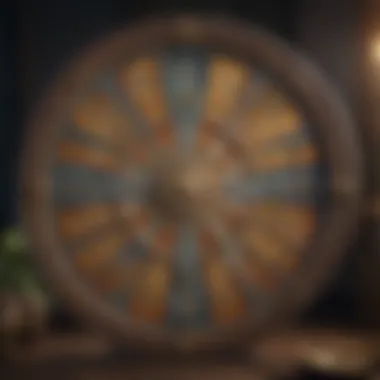

Interpreting tarot readings is a crucial aspect of using tarot cards for personal insight and guidance. It allows the reader to unravel the messages and meanings woven into each card's imagery. Beyond merely showcasing symbols and interpretations, this process deepens one’s understanding of life's complexities and encourages self-reflection. By grasping the nuances in readings, both practitioners and querents can better navigate challenges and opportunities.
Understanding Reversed Cards
Reversed cards in tarot readings present a unique layer of interpretation. When a card appears upside down, it often suggests a blockage, imbalance, or an alternative aspect of its upright meaning. For instance, the Seven of Swords, which usually indicates strategy and cleverness in its normal stance, when reversed can signify deception or the need for caution against betrayal. Understanding reversed cards is essential, as it adds depth to the reading.
Some points to consider about reversed cards include:
- Altered Meanings: The meanings can shift dramatically. It is not just a simple opposite but an expression of nuances.
- Situational Relevance: It often reflects external influences on the querent’s situation.
- Emotional Tones: Reversed cards may signal internal struggles or emotional dilemmas that require attention.
Recognizing the importance of reversed cards can ultimately enhance the accuracy of the entire reading.
Contextual Interpretation
Contextual interpretation involves analyzing the cards within the framework of the surrounding cards, the question posed, and the specific situation of the querent. This approach recognizes that tarot readings are seldom static. They are dynamic reflections of personal circumstances, thoughts, and emotions.
Key components of contextual interpretation are:
- The Position of Cards: Each position in a spread carries its own significance, affecting the overall understanding of the reading. For instance, the influence of a card may differ significantly if it appears in a past, present, or future position.
- Personal Context: The background and mindset of the querent are instrumental. Factors like recent experiences, emotional state, and even geographical surroundings can shift meanings.
- Relationship Between Cards: How cards interact with one another is vital. For example, if the Tower appears alongside the Star, it might indicate a necessary upheaval that ultimately leads to healing and hope.
By embracing contextual interpretation, tarot readers can provide richer, more relevant insights that resonate on a deeper level with their callers.
In summary, interpreting tarot readings thoroughly enhances self-awareness and personal growth. This process demands an understanding of both individual cards and the context in which they are drawn. The goal is to create a narrative that speaks not just to the surface but delves into the inner workings of thoughts, emotions, and life’s unfolding journey.
Using Tarot Cards for Personal Growth
Tarot cards offer more than just predictions about the future; they serve as powerful tools for personal transformation and self-discovery. In the realm of tarot, individuals can embark on journeys that promote self-awareness, emotional healing, and spiritual insight. Through the careful interpretation of card imagery and symbolism, one can unlock deeper layers of the self, navigating through feelings and challenges that may otherwise remain unexamined. Utilizing tarot in everyday life allows practitioners to gain clarity, set meaningful intentions, and cultivate a mindful approach to their existence.
Daily Card Draws
Engaging in daily card draws can be a simple yet profound practice for anyone seeking personal growth. This method involves selecting one card each day, providing an opportunity to reflect on its meaning and relevance to your life. Here are some advantages and considerations about daily card draws:
- Self-Reflection: Drawing a card invites introspection. It encourages you to consider how the card's symbolism applies to your daily experiences, fostering a greater understanding of your emotions and thoughts.
- Mindfulness: This practice serves to anchor you in the present moment. By focusing on one card, you can cultivate mindfulness, guiding your actions and reactions throughout the day.
- Patterns Over Time: Consistently drawing cards allows you to observe patterns and shift in your life. Noticing recurring themes can reveal important insights about where you are spiritually and emotionally.
To conduct a daily card draw, select a specific time each day. It could be in the morning to set your intention or at night to reflect on the day's events. Draw a card and consider its implications. Write down your thoughts in a journal to track your journey over time.
Setting Intentions
Setting intentions is a critical aspect of utilizing tarot for personal growth. It involves defining clear goals with the support of the symbolic messages from the cards. The process can be approached in these steps:
- Identify Your Goals: Before drawing cards, ask yourself what you want to focus on. This could relate to personal challenges, career movements, or emotional well-being.
- Draw the Cards: Engage with your deck thoughtfully. Each card should be drawn with the intention of gaining insight or guidance toward your goals.
- Reflect and Align: After obtaining your cards, reflect deeply on how their meanings align with your aspirations. Consider how you might adjust your actions or thoughts to support your intentions.
- Take Action: Setting an intention is the first step, but taking concrete actions is crucial. Use the insights gained from your tarot reading to inform your next steps and decision-making processes.
“Intention is the starting point of every dream.” As you interlace intention with tarot, you empower yourself to manifest your desired reality.
Ethical Considerations in Tarot Reading
The practice of tarot reading carries with it a profound responsibility. Understanding ethical considerations is crucial for both practitioners and clients. By acknowledging the boundries and principles of ethics, tarot readers grow in credibility and trust within their community. This section addresses key ethical areas like confidentiality, trust, and responsibility to clients, which are essential elements in fostering a positive experience for everyone involved.
Confidentiality and Trust
Maintaining confidentiality is central to building trust in any reading. The information clients share is often personal. Readers must respect that privacy. A breach of confidentiality can lead to a loss of trust and may discourage clients from seeking assistance in the future. It is essential to establish clear agreements on how information will be kept secret and used only in beneficial ways.
- Always ensure consent before sharing any client information, even in hypothetical scenarios.
- Reassure clients that their shares will remain private to create a safe space for open dialogue.
- Consider written agreements outlining confidentiality clauses, ensuring both parties understand their rights and duties.
By upholding these principles, tarot readers can effectively foster a supportive environment, enhancing the overall experience for the clients.
Responsibility to Clients
Tarot readers hold a responsibility that goes beyond the card readings. They should be aware of their influence on clients' lives. Misinterpretation or hasty answers can cause emotional harm or mislead those seeking guidance. Therefore, it is vital to thoughtfully consider the messages shared in readings.
- Readers should frame their interpretations as suggestions, not absolute truths.
- Encourage clients to engage with the cards and derive meaning for themselves.
- Help clients distinguish recreational reading from serious inquiries about their lives.
Closure
The conclusion serves as a critical component of this article. It encapsulates the key themes and insights presented throughout the discussion on tarot cards and their meanings. By synthesizing the information shared in previous sections, it provides a clear understanding of why tarot is more than a mere fortune-telling tool.
One crucial element to note is the interconnection between imagery and meaning. Each tarot card is rich with symbolism that fosters a deeper exploration into personal and spiritual realms. This understanding enhances the value of tarot readings, allowing users to derive profound insights into their lives and decisions.
Moreover, engaging with tarot promotes greater self-awareness. The act of interpreting tarot cards can be a reflective process. This can lead to improved emotional intelligence and everyday decision-making skills. Readers are encouraged to see this practice as a journey toward mastery rather than a destination.
These benefits make tarot an essential tool in holistic life approaches. It not only enriches the user's perspective but also encourages ethical and responsible reading practices, fostering trust and confidentiality in the client-reader relationship.
"Tarot is a way to explore one’s identity, emotions, and circumstances. It can guide them into understanding their deeper selves."
By understanding the implications of the imagery within tarot cards, users can utilize this knowledge effectively. They can navigate challenges with resilience and clarity.
Summary of Key Points
To summarize the essential points discussed:
- The rich symbolism in tarot aids in deeper self-reflection and insights.
- Tarot can enhance decision-making skills and emotional intelligence.
- Ethical considerations, such as confidentiality and responsibility, are important in tarot reading practices.
- Engaging with tarot is a fruitful journey towards personal growth and understanding.
Encouragement for Exploration
As we conclude, it is important to encourage ongoing exploration of tarot. Whether you are a novice or an experienced reader, each card holds unique insights waiting to be discovered.
Venturing into different decks and various interpretations can expand your understanding of tarot and its vast symbolic landscape. Delve into historical contexts, cultural variations, and how these affect card meanings. The more you explore, the richer your understanding will become.
Additionally, consider joining forums or communities online. Platforms such as Reddit can provide valuable discussions and shared experiences that enhance learning. By sharing insights and interpretations with others, you not only broaden your understanding but also contribute to the collective knowledge surrounding tarot.
In essence, the world of tarot beckons to be explored, and the journey can yield profound personal transformations. Do not hesitate to engage deeply with this practice, as it can illuminate paths previously unseen.



